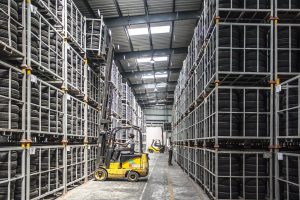Improving Quality Assurance During The Software Development Process
Quality assurance (QA) is a crucial part of the software development process. Regular testing ensures that applications are not filled with bugs and they operate as they should. Unfortunately, a lot of companies have trouble with their QA process because they think that throwing money or more people at the problem guarantees results. However, that’s not the way that it works and if you want to improve QA, you need to adapt your strategy and change the way that you approach it. Here’s how you can improve quality assurance in the software development process.
Improve Project Management
One of the biggest ways to improve QA is through project management. If you want to make sure that QA is working, you need to make sure that it’s an integrated part of the development process and not something separate from everything else. So many companies make the mistake of thinking of QA as an afterthought and that’s when the process suffers. Everyone has to have clear roles and responsibilities in testing as well as communicating with each other about what’s going on. It’s important that you have a good project management team to help integrate QA and ensure that it is a priority throughout the development process.
Implement Automation Tools
Another way that you can improve QA is through automation. With automation, it’s going to be a lot easier for people to do their jobs and test applications because they have tools at their disposal that make testing much more efficient. Using automation tools (like this one at testRigor.com) allows you to automate a lot of the time-consuming aspects of QA instead of testing everything manually. You can create detailed reports so you know exactly where the issues are and they can be resolved quickly and easily. Many people make the mistake of expanding their QA team instead of improving efficiency with automation tools. The problem is, more people complicate the process and increase the chances of mistakes. Automation tools solve this problem and save you a lot of time and money, while also ensuring that your QA processes are working as they should.
Test Throughout The Development Process
Another way that you can improve QA is by testing throughout the entire development process. Instead of waiting until everything is more or less completed and then testing, you should be constantly testing as things are added to applications. This ensures that new components and features don’t throw off the balance of what’s already been created and that there aren’t any crucial components that are overlooked. The more you test, the easier it is to fix issues when they arise and improve production quality. It’s always more effective to deal with small issues as and when they come up instead of trying to iron out complex problems at the very end of the development process.
Quality assurance is so important during the software development process and if you don’t get it right, the user experience of your applications will suffer. By making these simple changes, you can drastically improve QA in your business.





 Whether you are a manufacturer, an online retailer, or a traditional retailer, or a small
Whether you are a manufacturer, an online retailer, or a traditional retailer, or a small